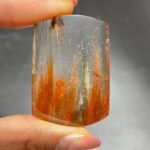What is a Small Cauldron?
A small cauldron is a versatile cooking and brewing vessel typically made of cast iron, copper, or stainless steel. It features a rounded or spherical shape with a wide opening, a curved handle, and three short legs for stability. The name “cauldron” originates from the Latin word “caldaria,” meaning “cooking pot.”

History of Small Cauldrons
The use of cauldrons dates back to ancient times. In Celtic cultures, cauldrons were considered sacred objects associated with rebirth and transformation. They were used for cooking, brewing, and ritual ceremonies. In medieval Europe, cauldrons were essential for preparing large meals and brewing ale.
Why Use a Small Cauldron?
Small cauldrons offer numerous benefits for modern cooks:
- Versatile: Cauldrons can be used for a wide range of cooking techniques, including boiling, steaming, stewing, and frying.
- Durable: Cast iron and copper cauldrons are highly durable and can withstand years of heavy use.
- Energy-efficient: The thick walls of cauldrons retain heat well, reducing energy consumption.
- Aesthetically pleasing: Cauldrons add a touch of rustic charm to any kitchen.
Types of Small Cauldrons
- Cast Iron Cauldrons: Cast iron cauldrons are durable and heat-resistant. They require seasoning before use to create a protective non-stick surface.
- Copper Cauldrons: Copper cauldrons are highly conductive, allowing for even heat distribution. They are more expensive than cast iron cauldrons.
- Stainless Steel Cauldrons: Stainless steel cauldrons are corrosion-resistant and easy to clean. They are less expensive than cast iron and copper cauldrons but may not retain heat as well.
Size and Capacity
Small cauldrons typically range in size from 1 to 5 liters. The size you choose will depend on your intended use. A 1-2 liter cauldron is suitable for preparing small batches of food or brewing a few cups of tea. A 3-5 liter cauldron is better suited for cooking larger meals or making soups and stews.
Applications of Small Cauldrons
Beyond traditional cooking, small cauldrons have various innovative applications:
- Infusing Oils: Fill a small cauldron with olive oil or another base oil. Add herbs, spices, or citrus rinds to create flavorful infused oils for salads, marinades, and dips.
- Outdoor Cooking: Cauldrons are ideal for outdoor cooking over an open fire or a portable camp stove.
- DIY Home Decor: Small cauldrons can be used as unique planters, candle holders, or decorative accents.
Useful Tables
Table 1: Small Cauldron Sizes and Capacities
| Size (cm) | Capacity (liters) |
|---|---|
| 12 | 1 |
| 16 | 2 |
| 20 | 3 |
| 24 | 4 |
| 28 | 5 |
Table 2: Types of Small Cauldrons
| Type | Material | Benefits |
|---|---|---|
| Cast Iron | Heavy, durable, heat-resistant | Seasoning required, prone to rust |
| Copper | Conductive, corrosion-resistant | Expensive, requires polishing |
| Stainless Steel | Lightweight, easy to clean | May not retain heat as well as cast iron or copper |
Table 3: Common Mistakes to Avoid
| Mistake | Result |
|---|---|
| Using a cauldron on a glass-top stove | Can scratch or crack the surface |
| Overcrowding the cauldron | Leads to uneven cooking, steam buildup, and splattering |
| Neglecting to season a cast iron cauldron | Can result in food sticking and rust |
| Using harsh cleaning agents on a copper cauldron | Can damage the finish |
| Heating a cauldron too quickly | Can cause warping or cracking |
Table 4: Step-by-Step Guide to Seasoning a Cast Iron Cauldron
- Preheat oven to 350°F (175°C).
- Wash the cauldron thoroughly and dry it completely.
- Apply a thin layer of vegetable oil or lard to the inside and outside of the cauldron.
- Place the cauldron in the oven upside down on a baking sheet lined with parchment paper.
- Bake for 1 hour.
- Turn off the oven and let the cauldron cool completely in the oven.
Frequently Asked Questions (FAQs)
-
Can I use a small cauldron on an induction cooktop?
– Only stainless steel or enameled cauldrons can be used on induction cooktops. -
How do I clean a copper cauldron?
– Use a mild dish soap and a soft cloth. Avoid using harsh cleaning agents or scouring pads. -
Can I store food in a cauldron?
– Yes, for short periods of time. However, it is not recommended to store acidic foods for extended periods as they can damage the surface of the cauldron. -
Why is there a hole in the bottom of some cauldrons?
– The hole is a “venting” hole, which allows steam to escape and prevents pressure buildup. -
Can I use a cauldron to make soap?
– Yes, small cauldrons are suitable for making small batches of soap. -
How do I repair a cracked cauldron?
– Cracks can be repaired using a metal epoxy or welding, depending on the severity of the crack. -
What is the “creative new word” that you mentioned earlier?
– “Cauldronology” is a term that refers to the study and exploration of innovative applications for small cauldrons. -
Where can I buy a small cauldron?
– Small cauldrons can be purchased from kitchenware stores, home improvement stores, and online retailers.




























